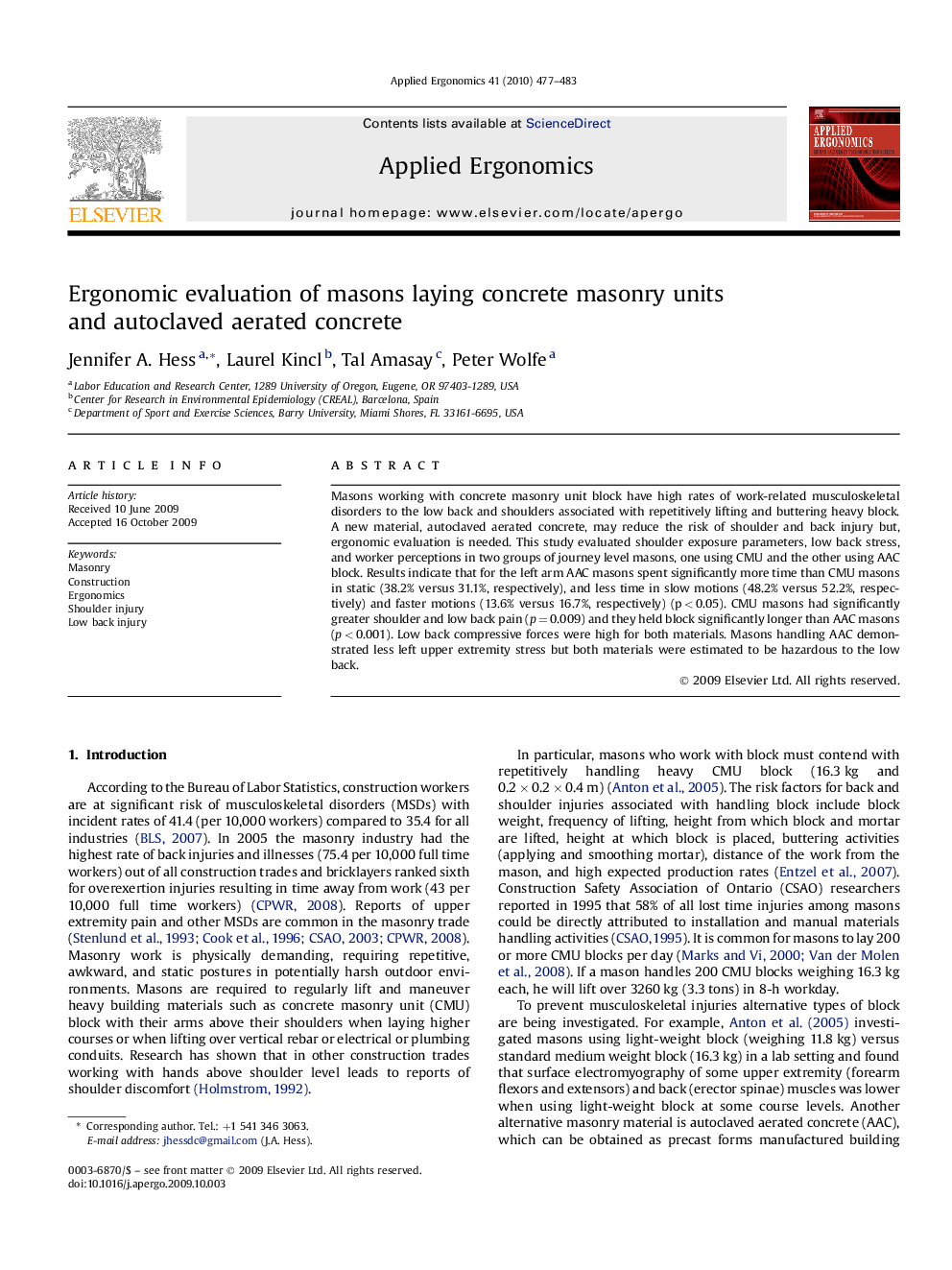| Article ID | Journal | Published Year | Pages | File Type |
|---|---|---|---|---|
| 549558 | Applied Ergonomics | 2010 | 7 Pages |
Masons working with concrete masonry unit block have high rates of work-related musculoskeletal disorders to the low back and shoulders associated with repetitively lifting and buttering heavy block. A new material, autoclaved aerated concrete, may reduce the risk of shoulder and back injury but, ergonomic evaluation is needed. This study evaluated shoulder exposure parameters, low back stress, and worker perceptions in two groups of journey level masons, one using CMU and the other using AAC block. Results indicate that for the left arm AAC masons spent significantly more time than CMU masons in static (38.2% versus 31.1%, respectively), and less time in slow motions (48.2% versus 52.2%, respectively) and faster motions (13.6% versus 16.7%, respectively) (p < 0.05). CMU masons had significantly greater shoulder and low back pain (p = 0.009) and they held block significantly longer than AAC masons (p < 0.001). Low back compressive forces were high for both materials. Masons handling AAC demonstrated less left upper extremity stress but both materials were estimated to be hazardous to the low back.
